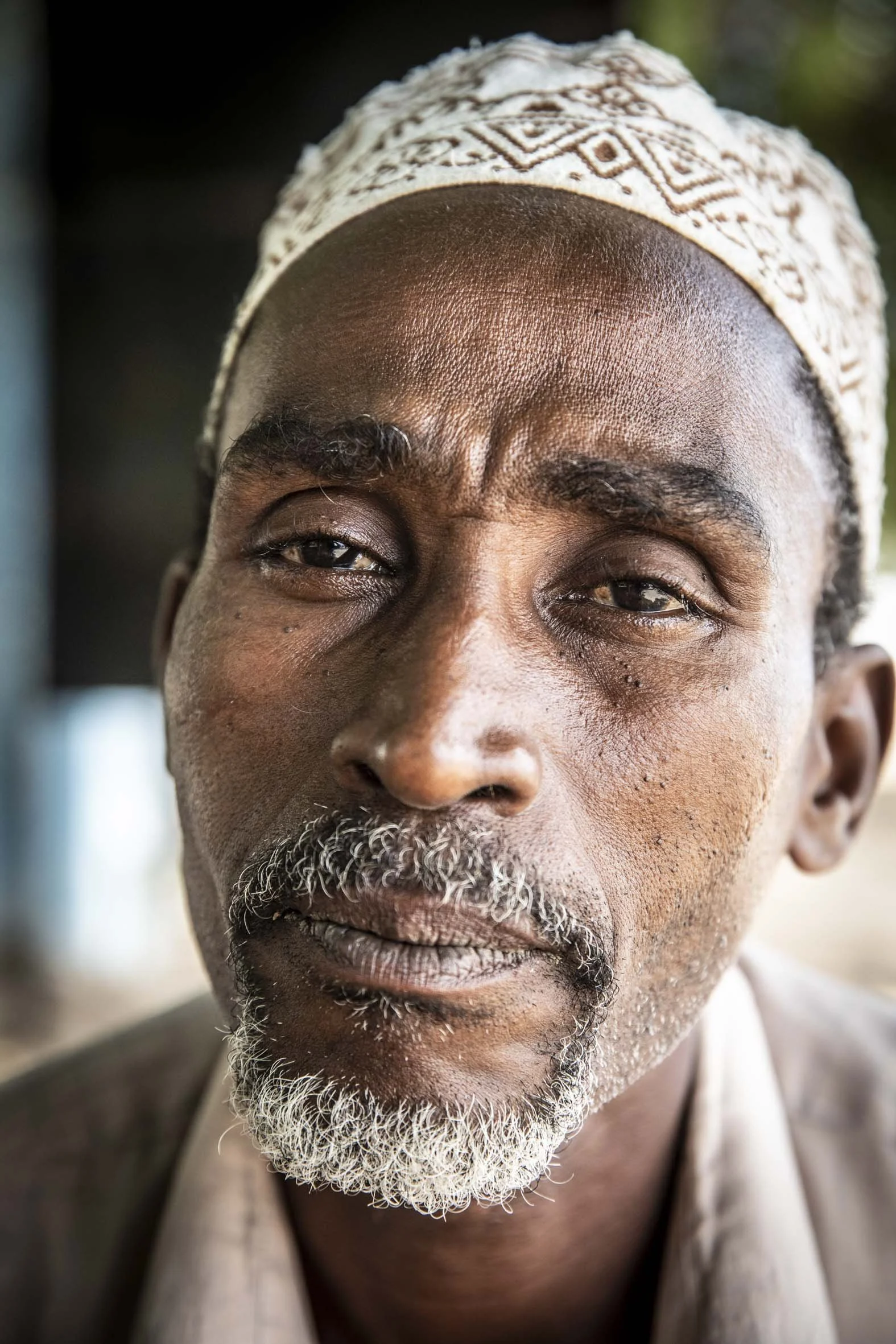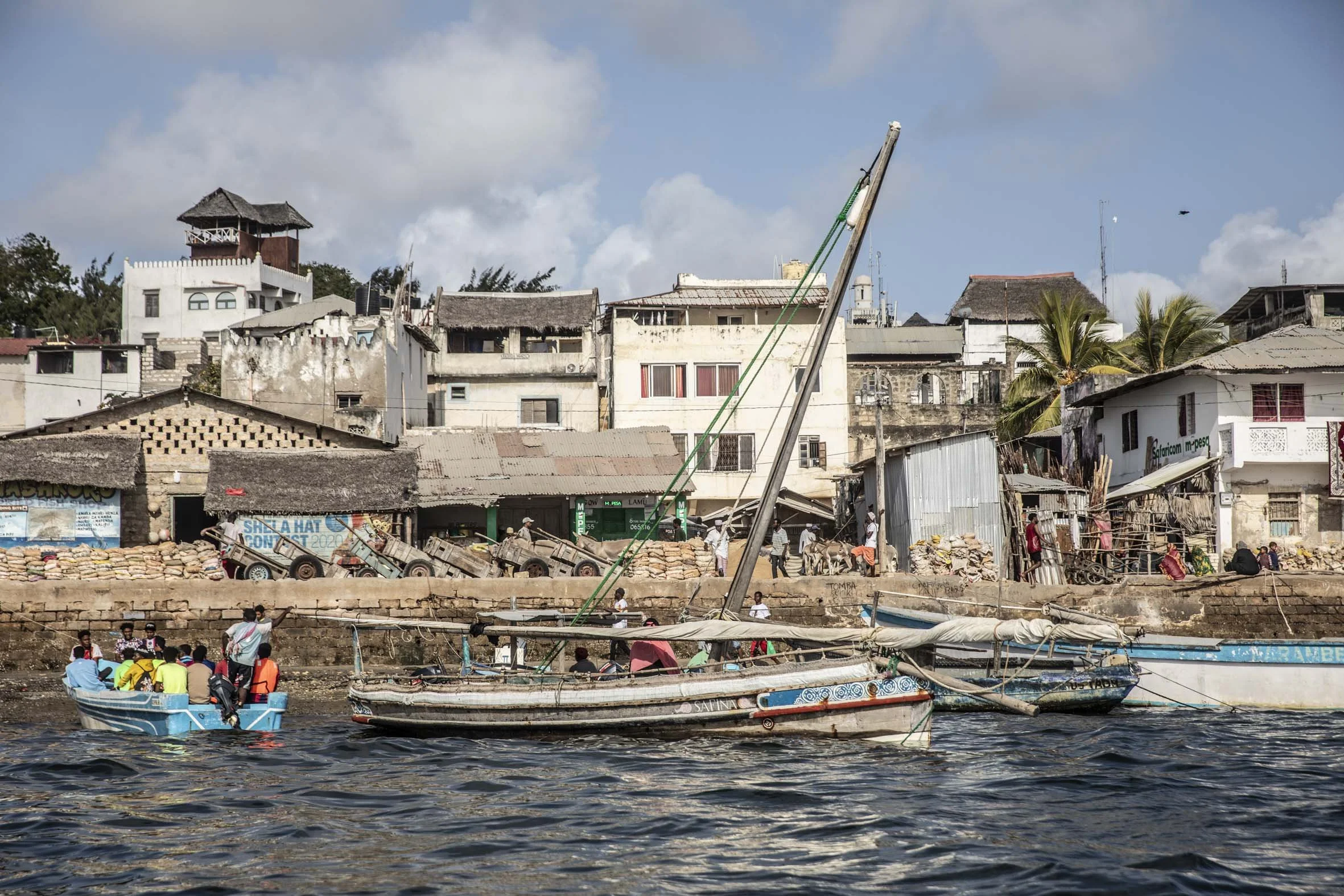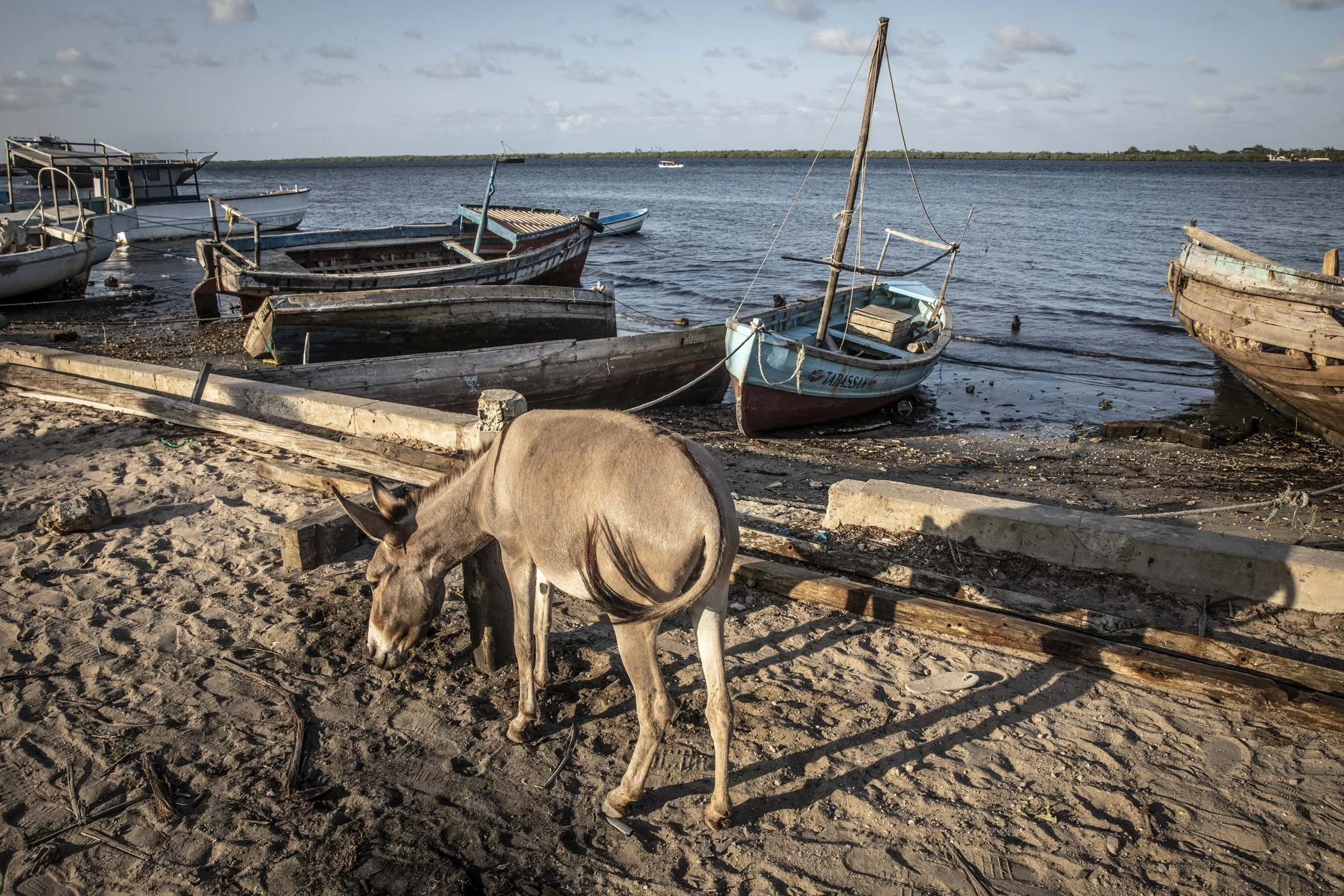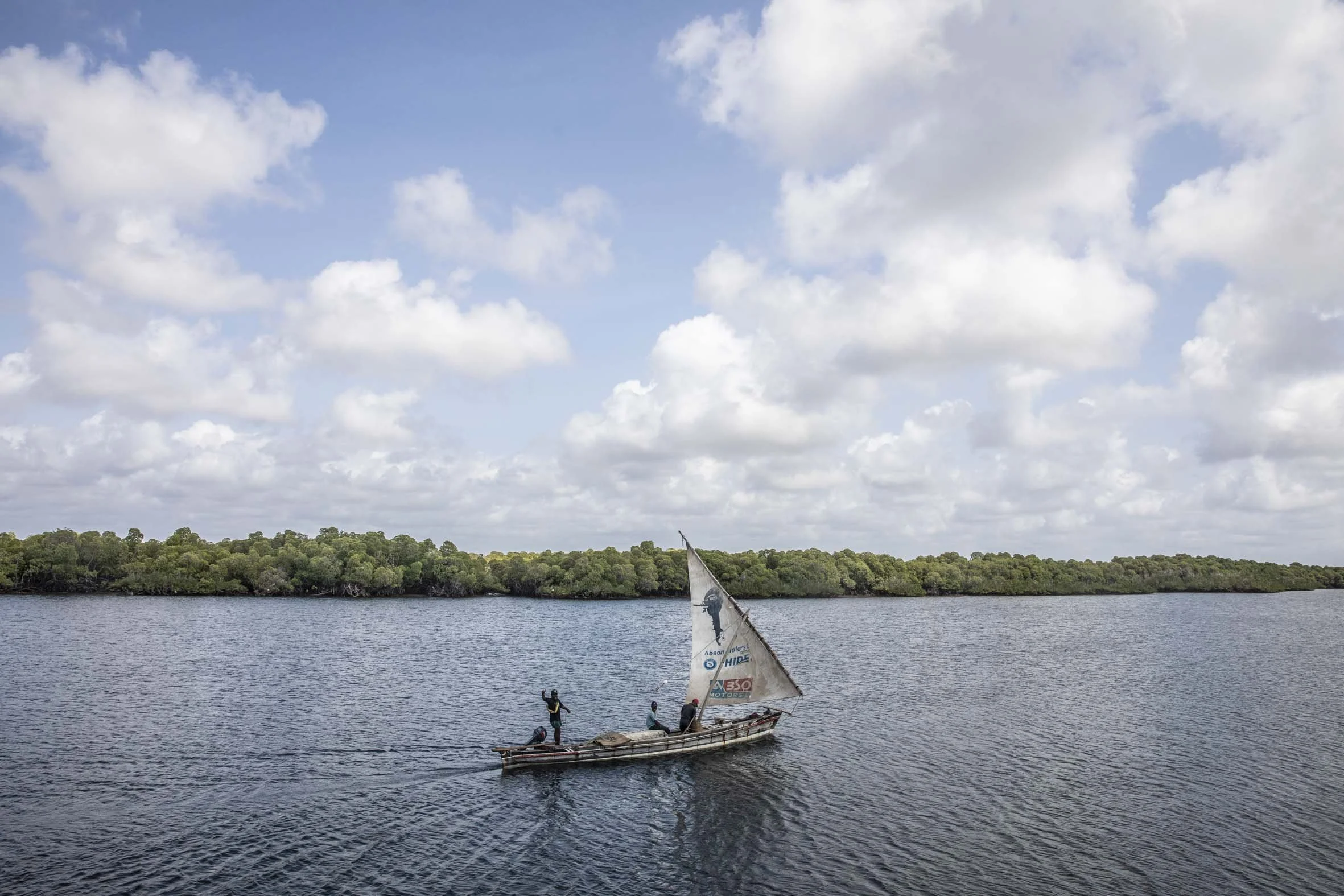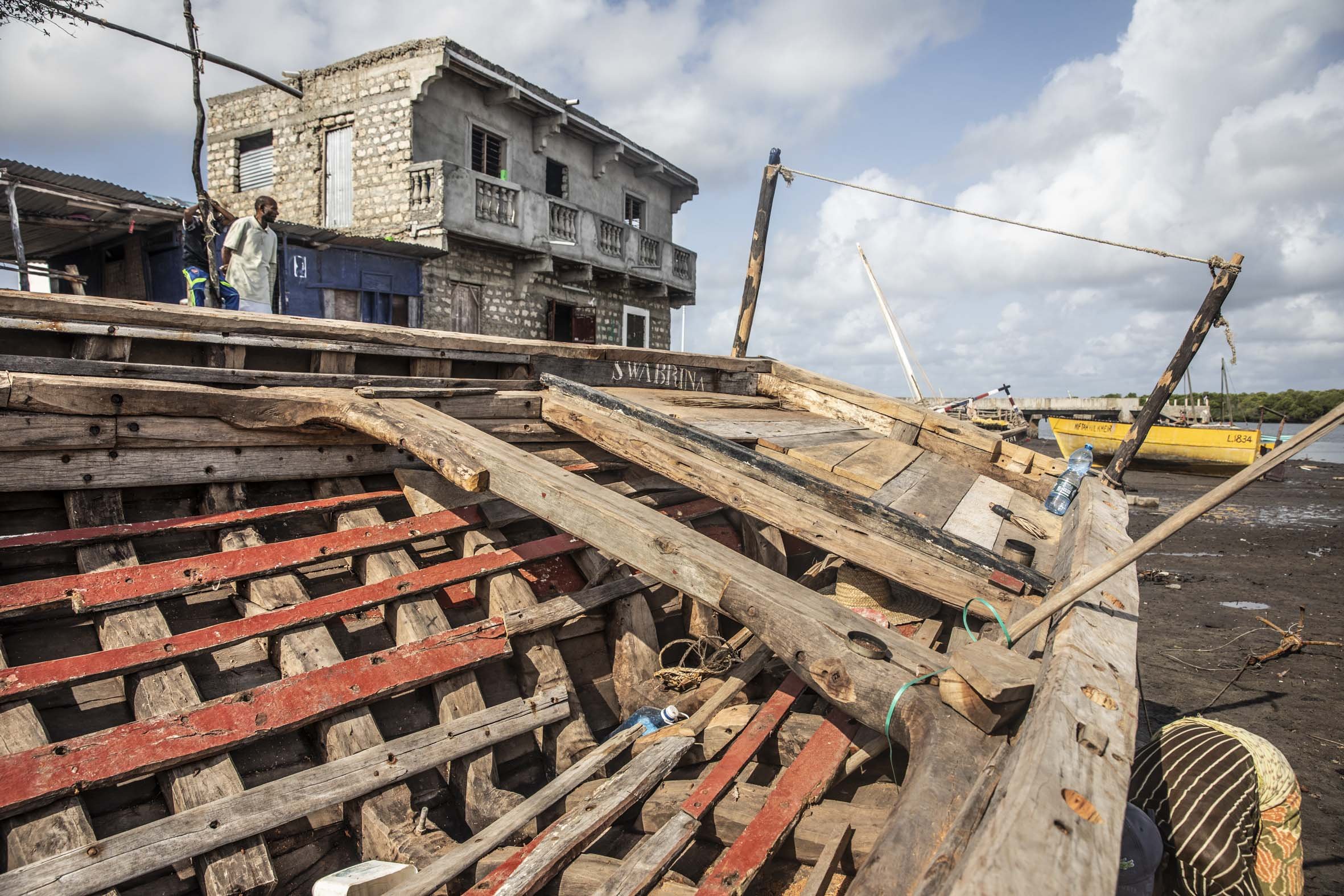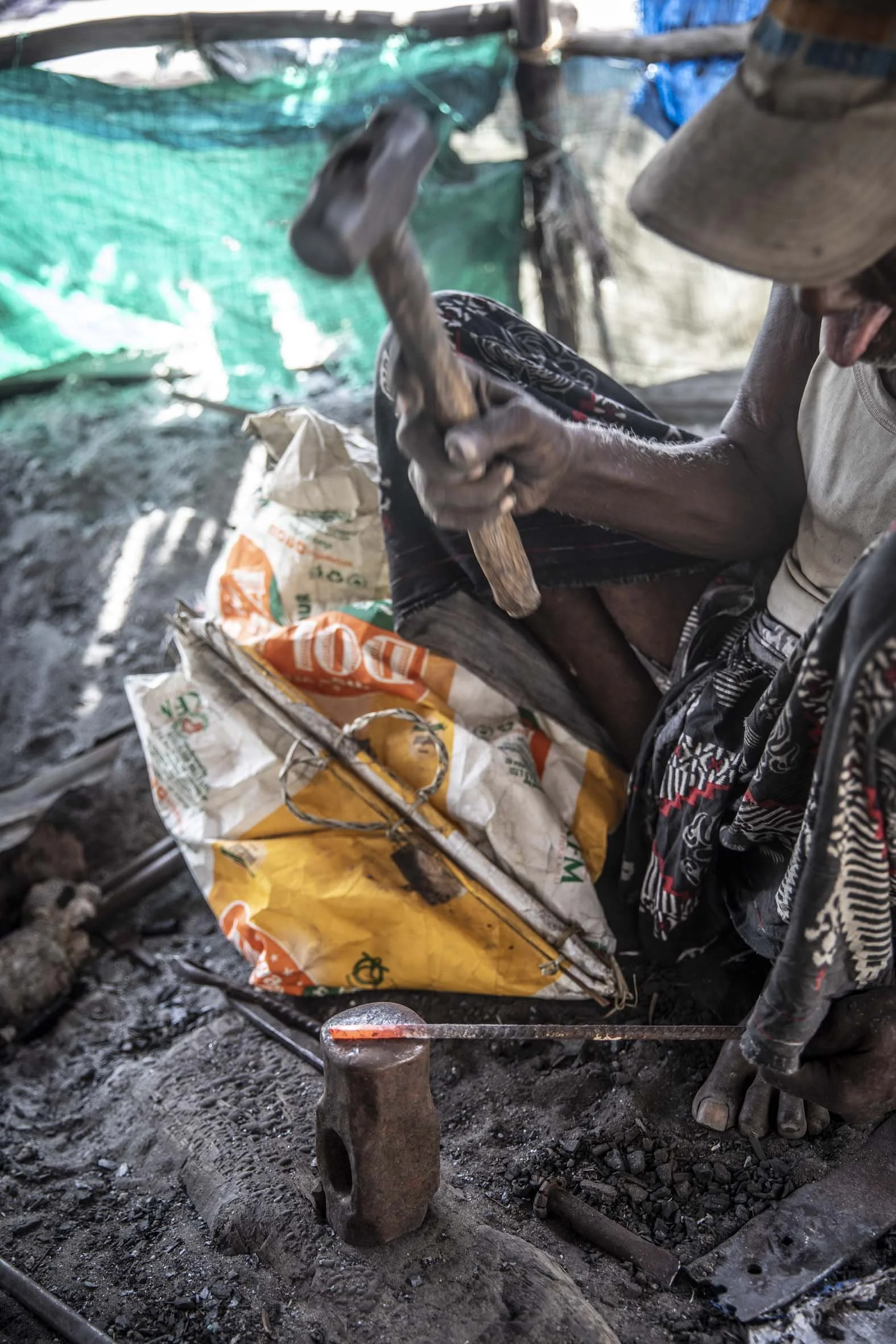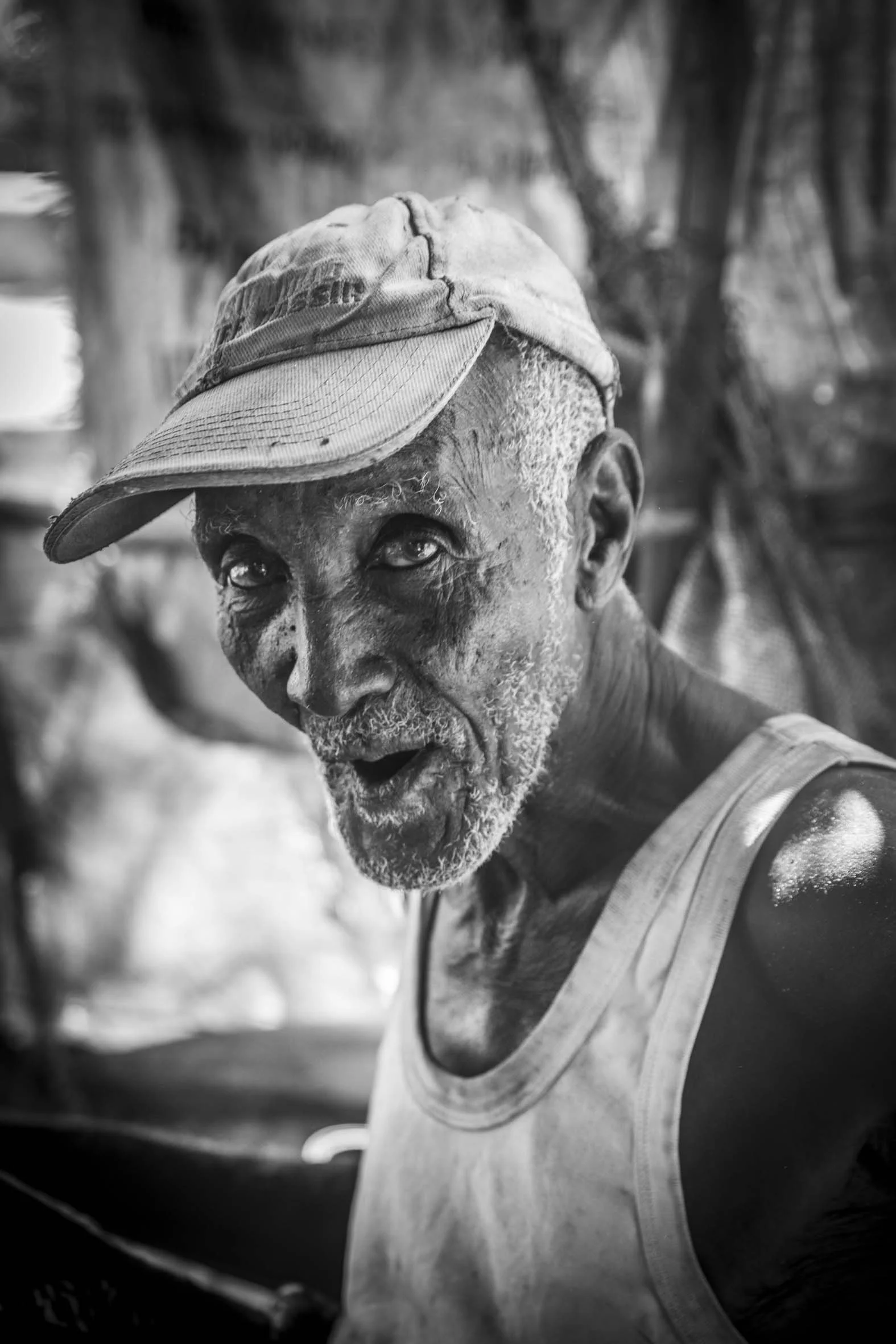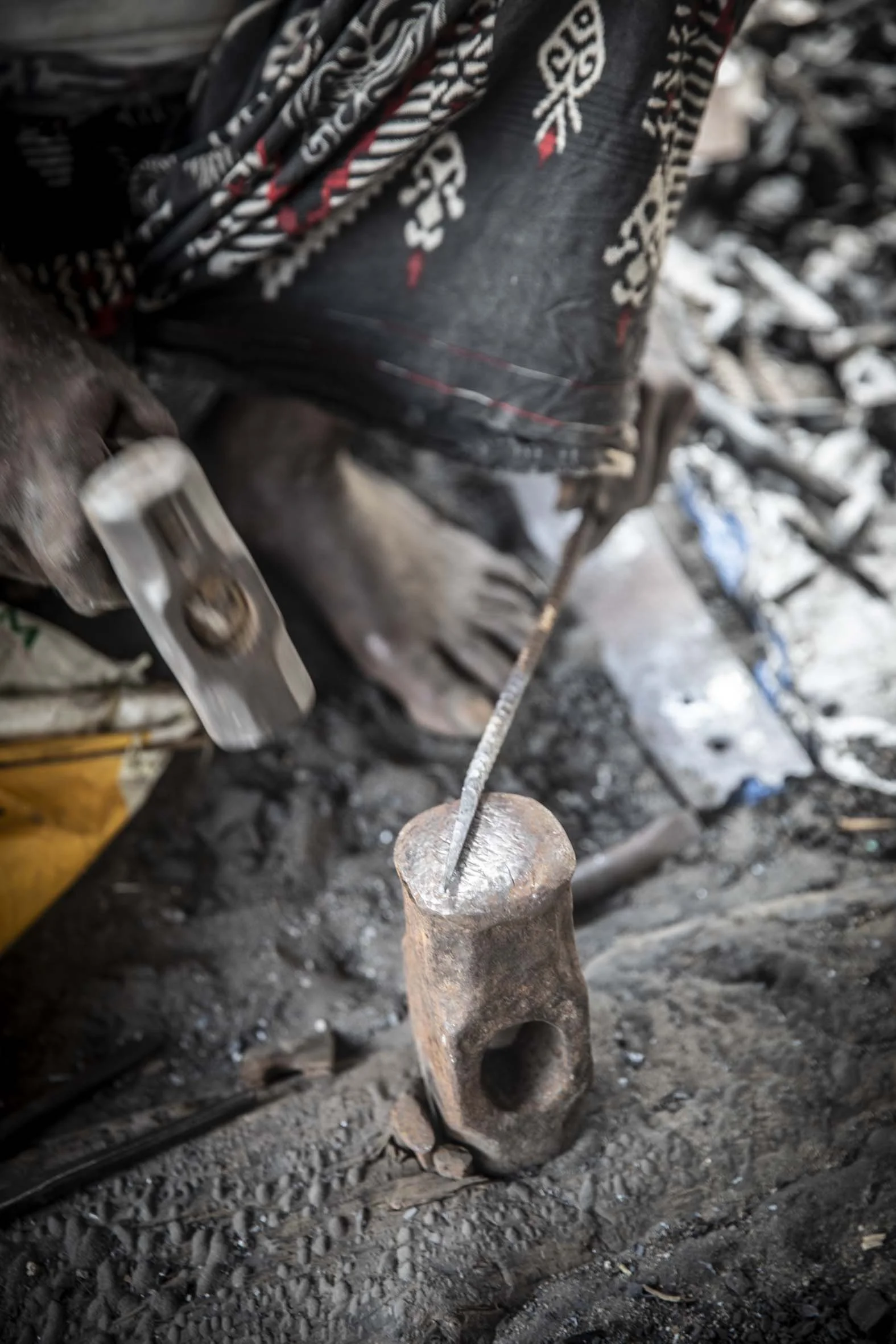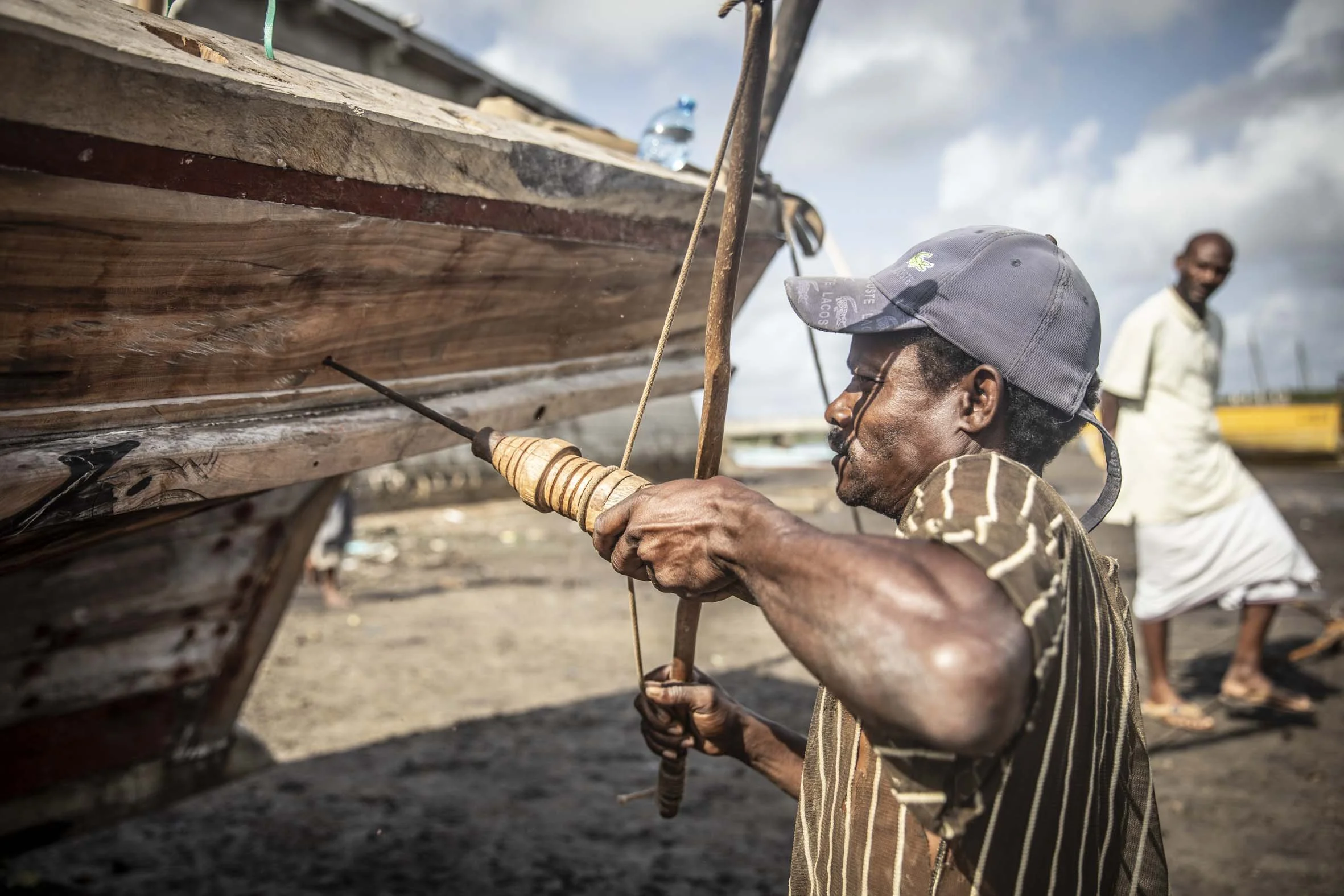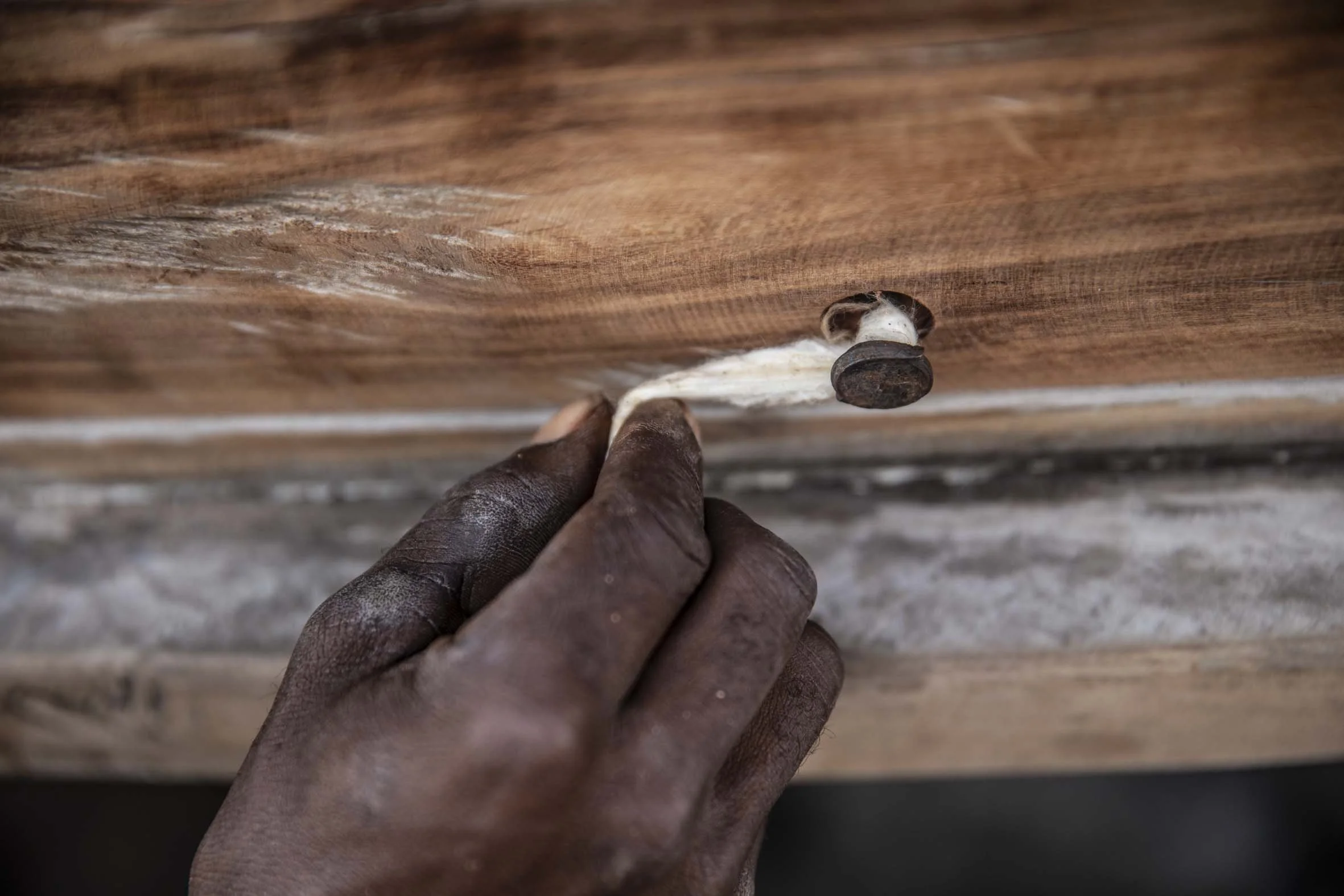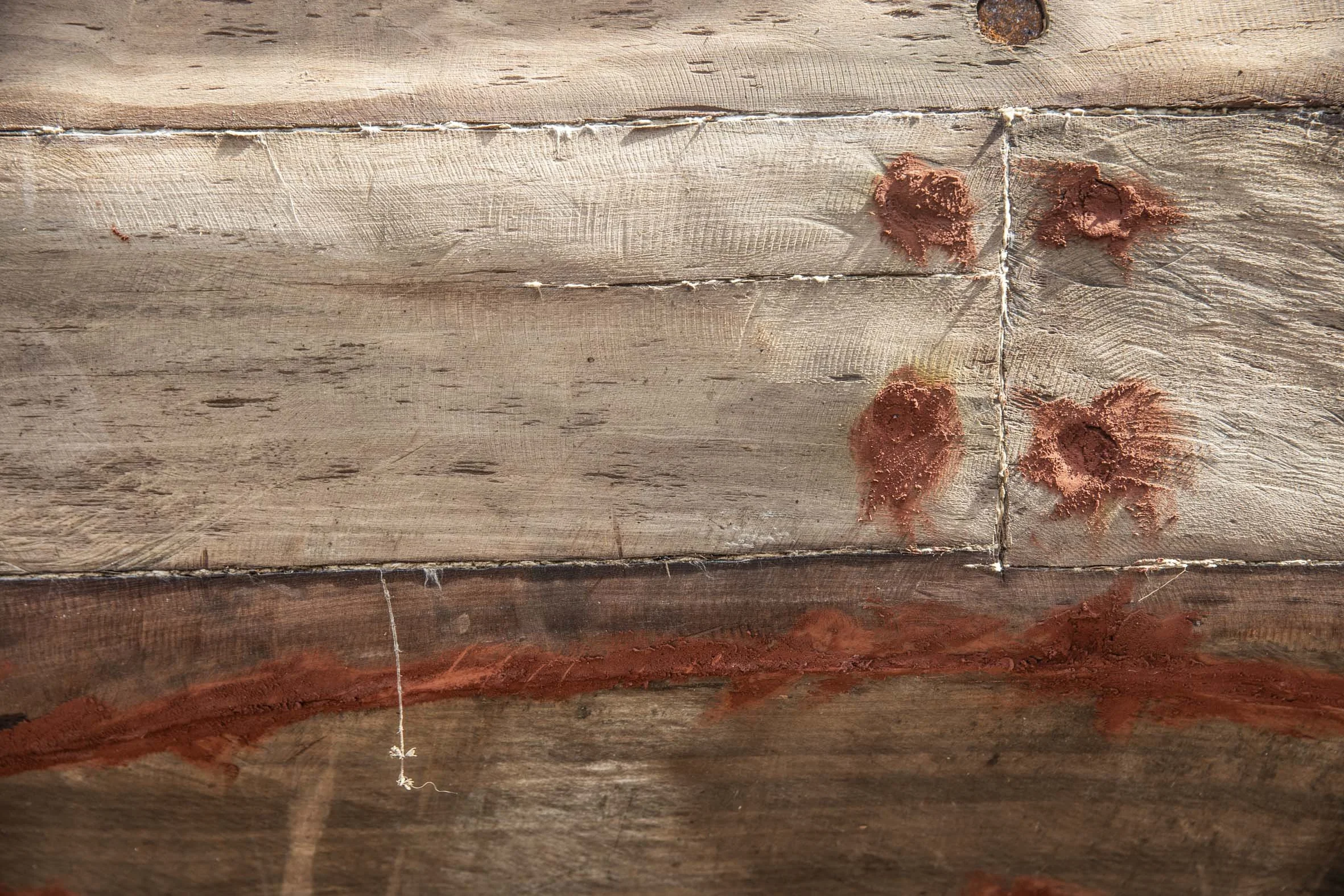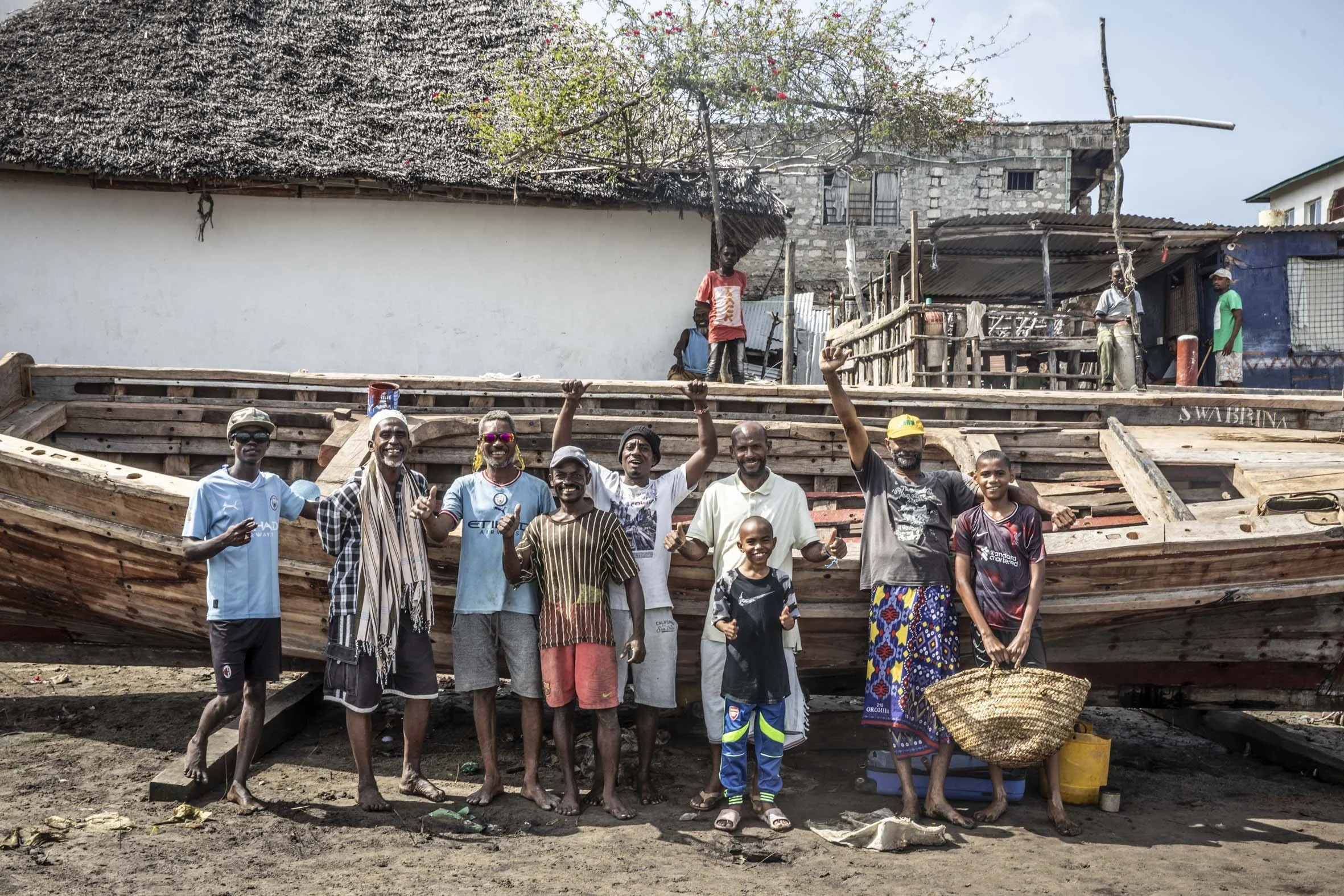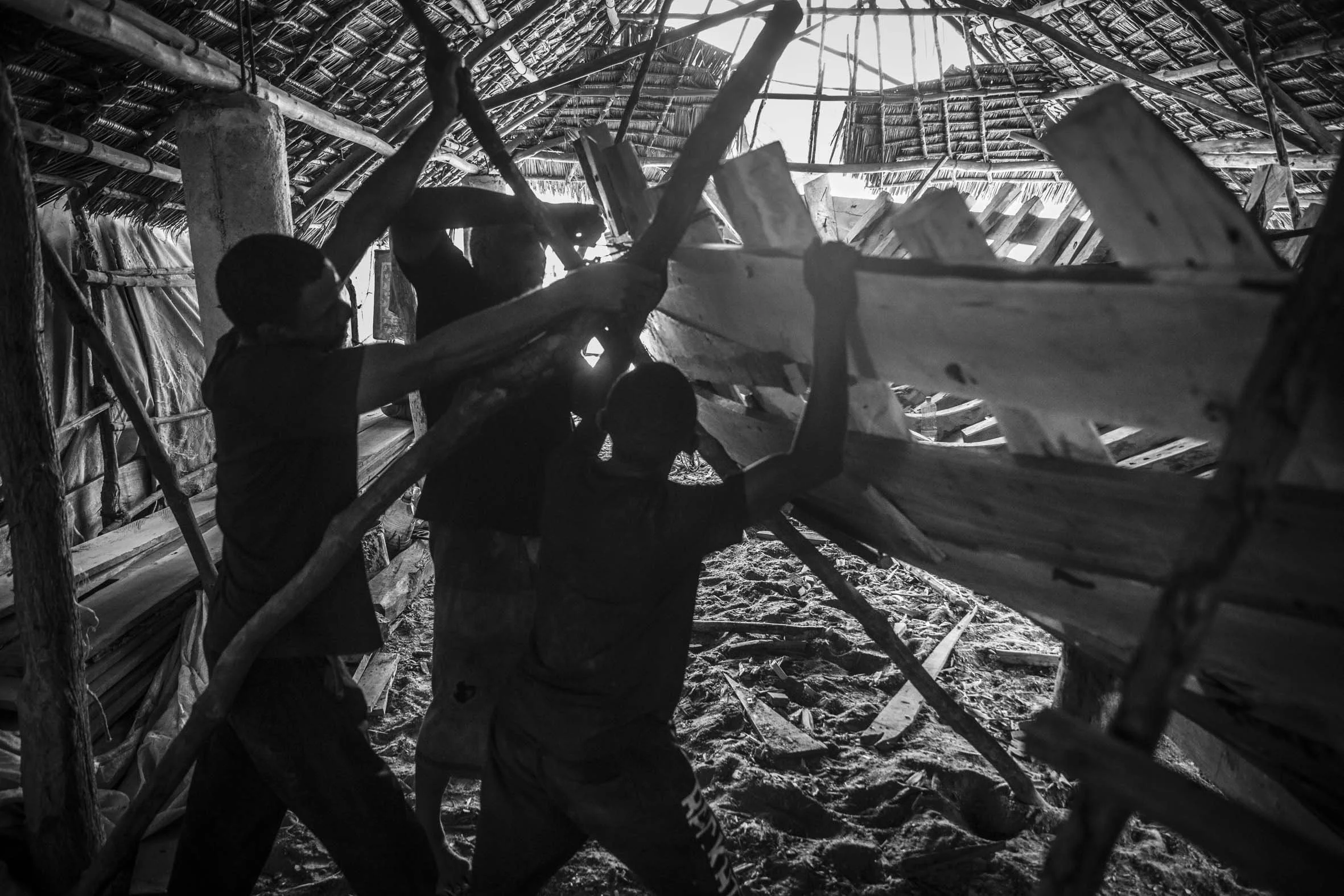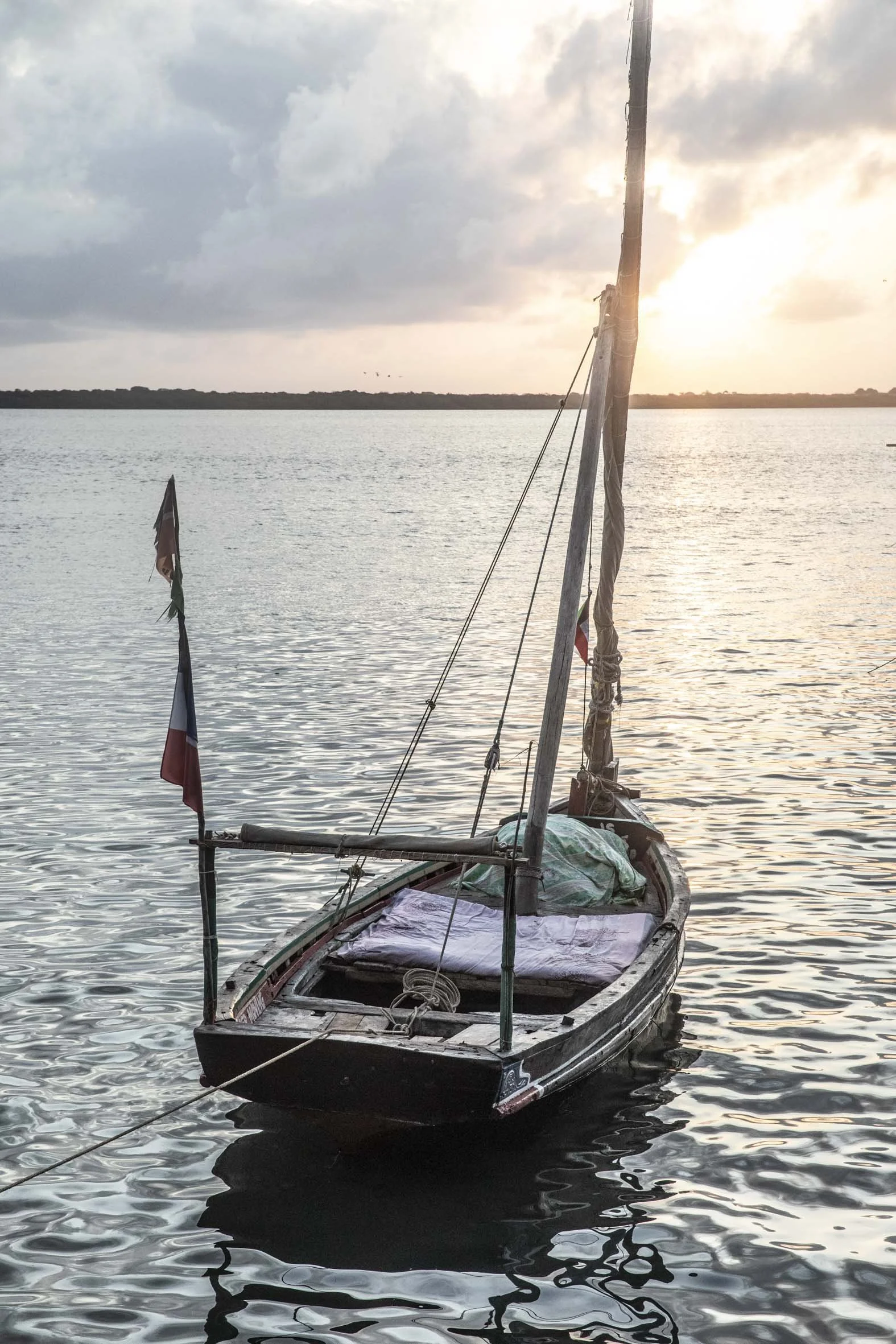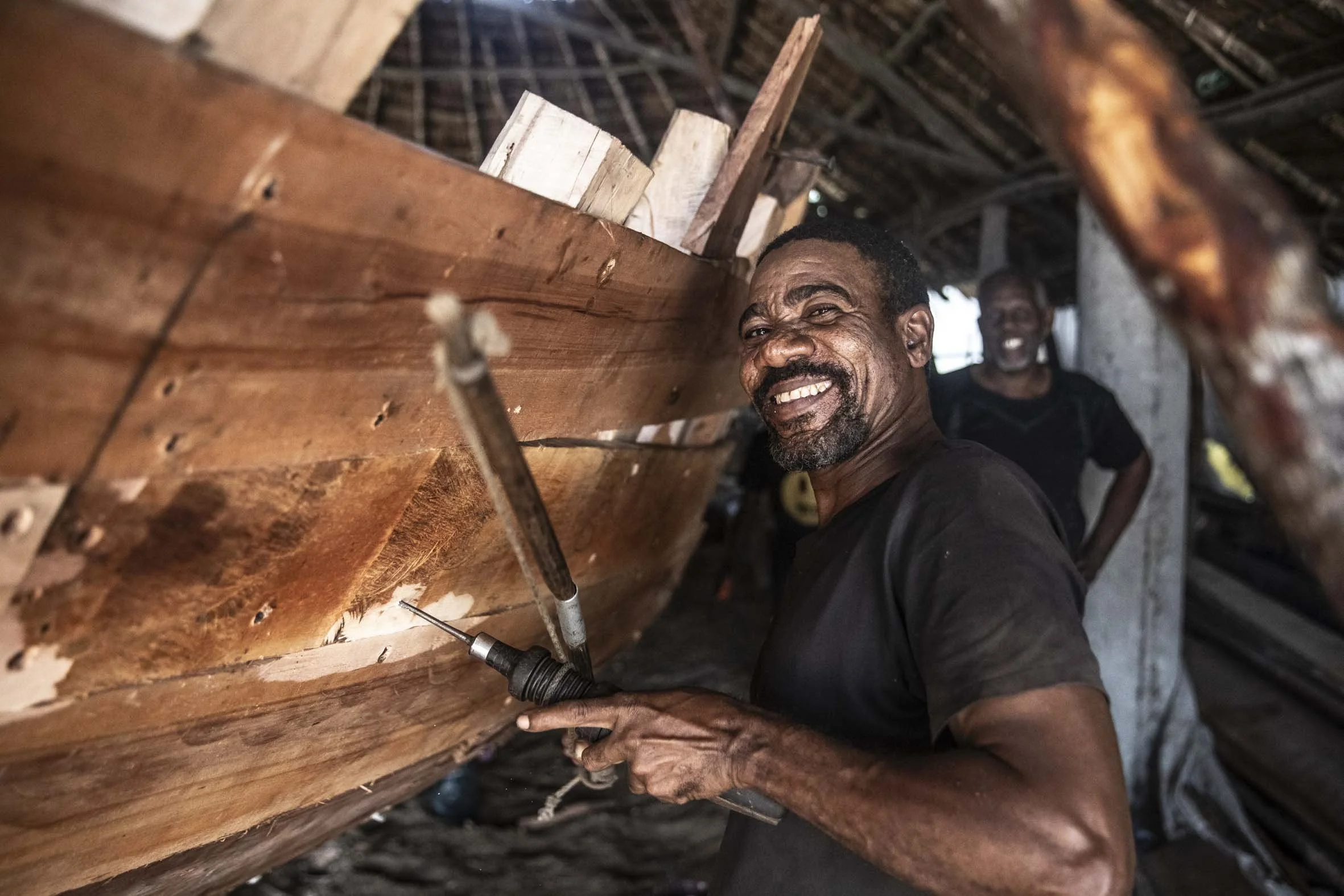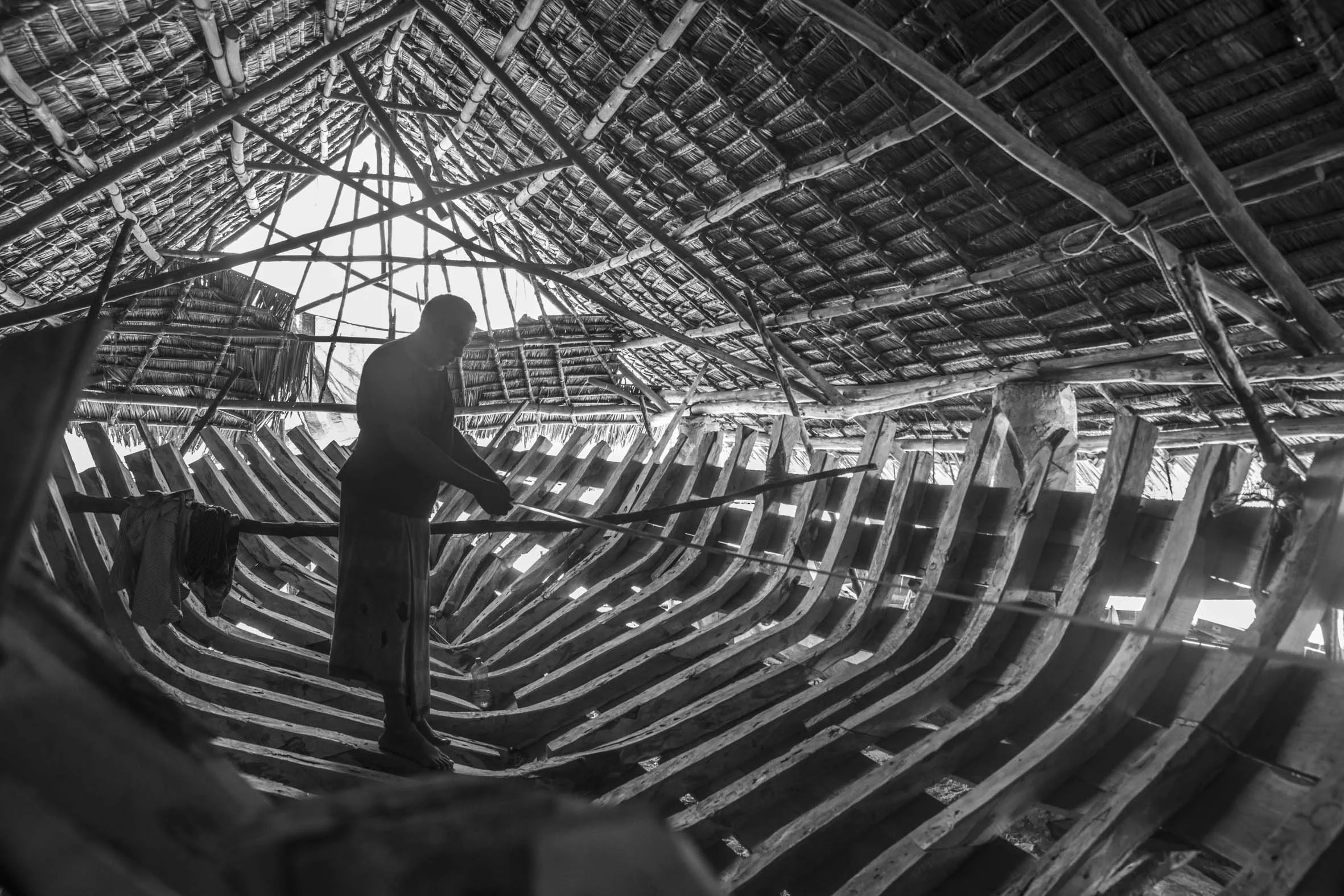Lamu Island - Part Two, Fundi Wa Dhow
The word “Fundi” in Swahili has a wide range of meanings. Nowadays its come to mean a fixer. So a fundi wa simu, is a fixer of mobile phones, or a fundi viatu is a cobbler, viatu being a shoe. But going back further the word had the slightly grander meaning of “craftsman” and it is this sense that we use it when applied to the dhow makers.
Most of Lamu island is unlivable, consisting of mangrove swamps and muddy channels and the core of the population gathers around the eastern coast between Shela in the south and the northern boundaries of Lamu town.
MATONDONI
However there is one small village on the northern, protected coast called Matondoni, and I was told that it was here, that a traditional Dhow building craft and culture was still going strong.
Mohammed
Walking the narrow lanes of Lamu town I came across Mohammed, or rather he came across me, and after protracted negotiation, (the arabic Kenyans of the coast love a negotiation) we agreed on a price to hire a small fibreglass banana boat with 15hp outboard for the next day. The following morning I paid my 50% up front, so we could fill up with fuel and leave Lamu town at 8am before the heat of the day.
It’s a 10 km trip anticlockwise around part of the Island from Lamu to Matondoni towns. The local transport Dhows were already working their way south along the channels before the afternoon sea breeze would make the beat too hard. As the buildings of Lamu town receded, I realised I was on board an small boat heading away from civilisation, with three non english speakers that I had just met, an expensive camera, and no one else in the world knew my intentions. With the hinterland of Lamu County renowned for El Shabab terrorism attacks perhaps I was treading a fine line between adventure and irresponsibility, but there was dhow building to see, and that seemed to justify the risks.
A thin local Dhow specifically designed for prawning
Arriving at Matondoni we wandered up the solid coral jetty and a along the beach to where a 35ft Dhow called SWABRINA was approaching completion. I was introduced to Saromala, the Fundi and through broken english and much sketching in the mud of the beach at low tide, I managed to learn the following.
SWABRINA is about 35ft long. Saromala wasn’t exactly sure himself, so I had to pace it out. She is being built on commission for a local businessman to transport coral blocks and sand and hence is a fuller shape in her bilges, compared to a craft that has been designed for carrying passengers. There are no drawn plans and all construction is done by eye alone.
SWABRINA
This ribs are fashioned from the local mangrove and can be made of up to three pieces scarfed together from port to starboard gunnel. The planking is African Mahogany (the word they used seemed to be Mgouri) and comes from Kililana not far away on the mainland. The stem is “ironwood” (“for banging into things”) and the keel is a timber called Mwangati (Juniperus procera).
The planks are bent by coating them in diesel, setting fire to them and shaping them while they are burning. As soon as they are roughly in position the fire is extinguished and the plank is fastened using nails made by an eighty five year old local blacksmith called Hussein. He starts with leftover concrete reo bars from local building sites. He looks like he’s on his last legs. I guess he’s inhaled a lot of charcoal fumes over the years. No one else in the village has learnt the skill from him.
To fasten the planks, a hole is drilled with a hand tool powered by a bow. the head is contersunk with a couple of blows from a half moon chisel, The steel nail is hammered in until just the head pertrudes, cotton is wrapped under the head and then she is driven home. This is then covered with a red compound made of a mixture of fine sawdust and antifoul.The cost of the boat when finished is about 1.5 million Kenyan Shillings or about $18,000 AU, and this includes spars, sails, anchors rigging etc. It will take about 6-8 months from order to delivery.
After much drawing in the sand and misunderstanding we decided that this dhow when laden would be able to sail at 50 degrees to the wind. The smaller boats can tack (which involves a lot of work) but the bigger boats wear around losing ground to leeward.
By this time a crowd had gathered. Word had spread of the Mzungu’s visit, always an opportunity for some quick cash. The sun was getting hot, excitement was rising, and the boat building advice was flowing fast in Swahili. Making the call that it was probably time to leave before things became complicated, I retreated back to the pier, thanked our hosts, said our goodbyes and we pointed the bows back towards Lamu town, and the relative safety of a town with 4G coverage!
SHELA
Because I only had three days in Lamu, the pressure was on to learn as much as I could in the small window of time. So the next day, early in the morning I started walking south along the coast from Lamu Town towards the tourist centre of Shela. When I say tourist centre…what I mean is, there are a couple of nice hotels and you can get a real coffee, but its not exactly Surfers Paradise. I walked the 4km along the beach passing donkeys carrying building material and hustlers trying to sell me boat rides. The beach down here is cleaner and more attractive, being washed by the ebb and flow of the Indian Ocean tides. Just above the tide line there are some thatched open sided working spaces with sand floors and inside of one of these I found Fundi Shelal, working at his shipwright business called Jokali Lali. He was obviously an expert and like shipwrights the world over was cautious of the time drain of the passer by who wants a chat. But when he realised that I was serious, and cared about his craft, he put down his tools and gave me his full attention.
Bending a mahogany plank into position to mark it up for cutting
He described the boat he is building to as “Mozambique style”. This means that it was an elegant double ender, with more beam and less draft than the local designs. Mozambique is 600nm south of Lamu. This boat has been commissioned by a local Kenyan to take tourists out for sunset dhow cruises and therefore is built with more comfort in mind. The hull shape has greater form stability and makes for faster reaching than the local boats but she won’t point as high.
Tradition Lamu hull shape left, “Mozambique Style right.
The rig will be almost identical to SWABRINA’s and her length is similar. Again when I asked how long she was Shelal wasn’t sure, so he got out a tape measure and we discovered she was 34ft stem to stern. They actually refer to her as a 24 footer, as this is the length of her keel which seems to be the distinguishing measurement.
Bow drills work well when to power source is available
This boat will cost its owner a little more to build than SWABRINA ( about $25,000AU) and the quality of the construction seemed slightly better with copper nails above the waterline.
I liked Shelal. His quiet expertise was apparent in his manner, and the way he directed his apprentice. He had a comfortable authority. If I was ordering a dhow for myself, he’s the man I would go to!
Fundi Shelal, measuring the length of the Dhow hull he is constructing.
We live our comfortable lives here in Australia, filling our worry buckets with issue like AI’s world takeover, Social Media bans for teenagers and what gender pronouns we should use. I can’t help thinking that six months working on the beach in Lamu, helping craft a beautiful dhow, learning Swahili and and how to tack a lateen rig, would make me a richer person than many things I might achieve by following the same straight road of conformity. But thats a big ask!


